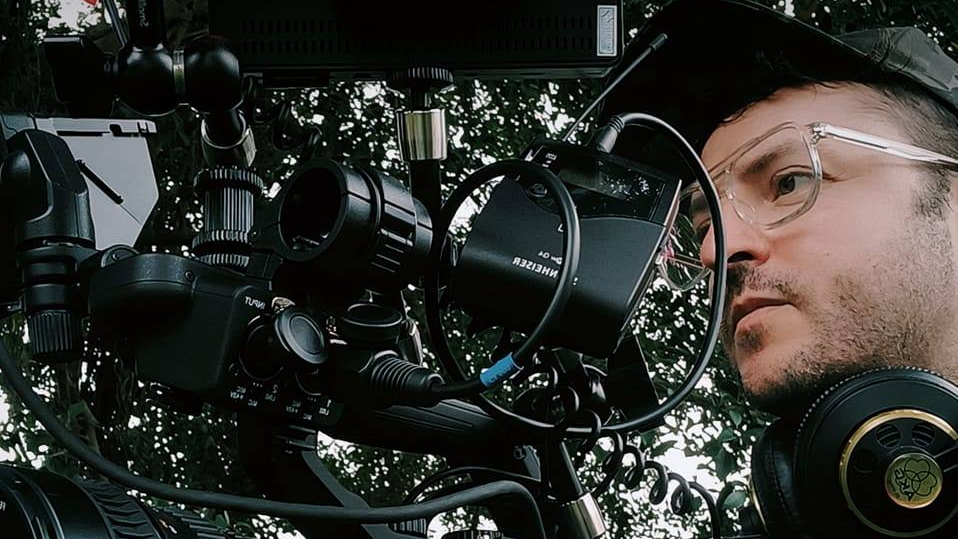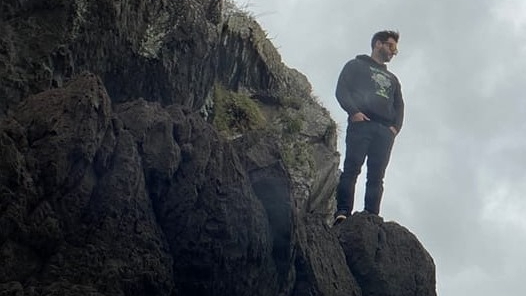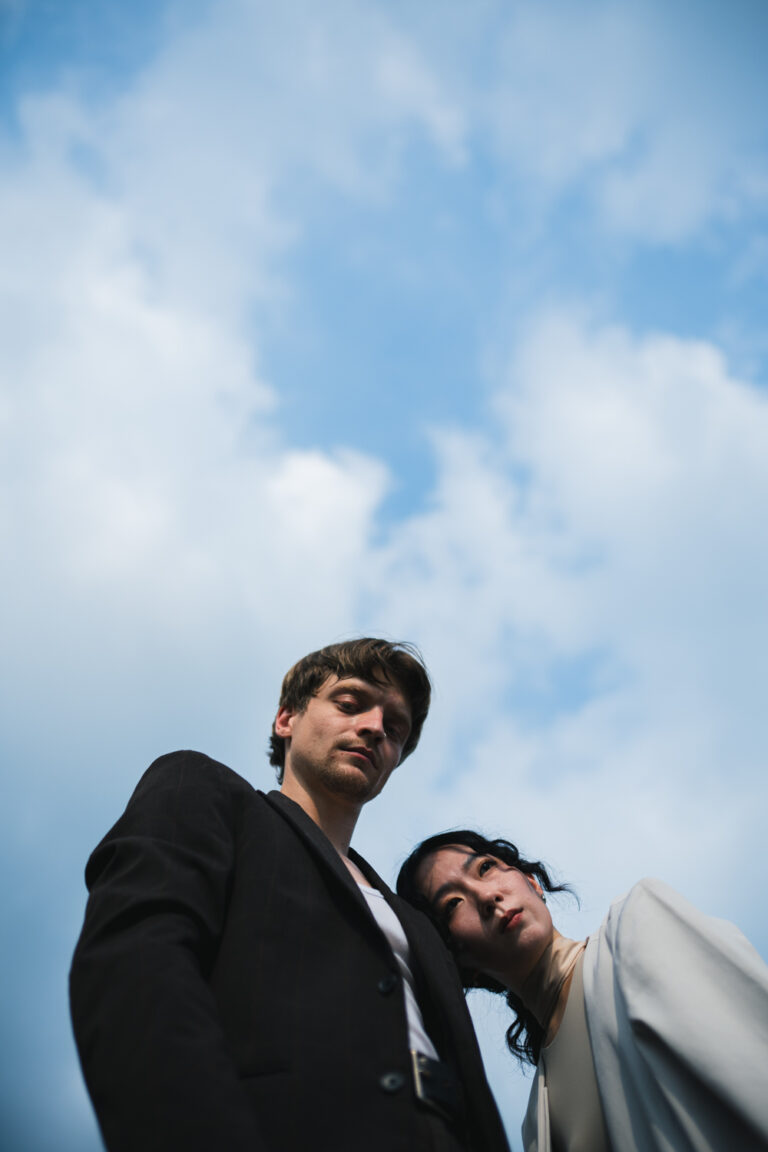Interview With Benoit

Multidisciplinary Visual Artist

Interview with Benoit Masse
Cinematographer, Photographer & Visual Artist
Q1. You’ve worked on Silence by Martin Scorsese — what’s it like being on a set of a project with that level of cinematic depth?
Working on Silence was a rare experience — like stepping into a living painting. I spent most of my days with Rodrigo Prieto, of whom I was an assistant. We’d have breakfast together, and often before the sun even rose, we’d hike up Yangmingshan through the morning mist to scout locations. I watched him shape light like a sculptor, looking for the exact spot where story, silence, and nature could meet in the frame.
One morning, in the makeup truck, I spoke with Liam Neeson. He told me something I’ll never forget: “The key to acting is to keep the emotions inside as much as possible.” That stuck with me. It applies to cinematography too — sometimes the most powerful image is the one that withholds, that vibrates with something unsaid.
Working under Martin Scorsese was like witnessing a master calligrapher draw each stroke with purpose. He conducts a film like a meditation. Everything is intentional. Every silence is part of the score. That experience didn’t just influence how I light — it changed how I think about image, emotion, and presence.
Q2. As a French artist with experience spanning continents, how does travel and cultural immersion shape the way you capture images?
It started in Saint-Raphaël, where I grew up between the sea and the stone. The Mediterranean light there is pure — almost sacred. Harsh at noon, golden by evening, always shaping the landscape with warmth and clarity. It taught me contrast, simplicity, and the emotional pull of natural light.
Later, in Seattle, I encountered something completely different — muted skies, rain that doesn’t stop, forests that seem to breathe. The Pacific Northwest gave me a sense of cinematic quiet. The space between things became just as important as the things themselves.
Taipei was all rhythm and texture. It pushed me to shoot faster, closer, more intuitively. Neon, puddles, scooters, markets — everything moves. But it also has silence, if you wait for it. I began to understand how chaos and poetry can live in the same frame.
And Yilan, just past the city, gave me breath again. The sea, the rice fields, the slower pace — it taught me to listen. To not always act, but receive. These places didn’t just shift my style — they changed how I see.

Q3. What draws you to the camera in the first place? Is it light, emotion, story?
I’ve always been introverted. Observing feels more natural to me than speaking. The camera lets me engage with the world from a place of stillness. It gives me permission to look deeply.
What draws me in is emotion — especially the quiet kind. A still face. A shadow across a wall. I want to catch the in-between moments, the breath before a thought. Light helps reveal that, and story holds it. But what I’m really after is feeling — unspoken, almost invisible.
Q4. You’re not just a technician behind the lens — you’re a visual storyteller. How do you approach a shoot when the goal is to create something artistic rather than purely commercial?
I want to be technically precise — not to show off, but to be free. The more fluent I am with the gear, the more I can trust my instincts. Technique supports creativity — it’s what lets you react in the moment without hesitation.
That said, I also value commercial work. It teaches you to adapt. To create within limits. Some of my most interesting visuals came from needing to solve a problem with limited time or gear. Constraints don’t always restrict creativity — sometimes they spark it.
In more artistic projects, I slow down. I let the space breathe. I search for something that’s not scripted. But even then, the foundation is always the same: know your tools, and follow the feeling.
Q5. What role does improvisation play in your work, especially in more poetic or intuitive projects?
A huge one. I grew up improvising on the guitar, and that shaped how I think. You learn to feel your way forward — to listen, not just perform. The same applies to image-making. I might start with a concept, but I let the moment guide me.
Improvisation in filmmaking isn’t chaos — it’s responsive storytelling. A shift in the light, an unexpected movement, a real emotion that appears when no one’s watching. These are the gifts. And you have to be open enough to catch them.
Q6. How do you balance the technical demands of filmmaking with the raw emotional core of an artistic vision?
By mastering the technical so it disappears. I want to forget the camera exists. Like a musician who no longer looks at their fingers. That’s when I can focus fully on what matters — rhythm, tone, presence.
If I’ve done my work — dialed in the lighting, cleaned the frame, locked the exposure — then I’m free to watch the real story unfold. That’s when I can notice the details: the trembling hand, the way the light hits someone’s cheek when they pause.
Artistic work needs room to breathe. And the technical gives it that room.
Q7. In a world saturated with visuals, what makes an image matter to you?
An image matters when it lingers. When it leaves a residue you can’t explain. I’m less interested in perfection and more in presence. A photograph can be grainy, underexposed, slightly off — and still strike something deep.
What I search for is truth. Not in a factual sense, but emotional truth. If an image can hold a feeling — tension, longing, memory — then it matters. That’s what lasts.
Q8. Do you think your French roots influence your eye — perhaps in terms of composition, mood, or narrative style?
Definitely. French cinema, French light — they taught me to slow down. To sit with ambiguity. I’m drawn to atmosphere, to frames that suggest more than they show.
I love stillness. Long takes. The beauty of a character just existing without explanation. There’s a romantic melancholy in my work sometimes — I think that’s Saint-Raphaël in my bones.
Q9. What’s a recent artistic project you’ve done that really felt like you — and why?
I filmed a short sequence by the sea — no dialogue, no actors, just movement. Wind, water, a piece of cloth in the current. I shot it alone with a single lens, handheld. No plan. I was just responding to the day.
It felt like a self-portrait — not of me physically, but emotionally. The rhythm, the restraint, the silence between cuts. That project reminded me why I started. Why I love this medium.
Q10. You’ve shot commercial work and deeply personal visuals. Do you think the two can coexist?
Yes, and I think they should. Commercial work can still be honest. In fact, I think people are craving that now — sincerity over polish.
I try to bring the same eye to both. Even in commercial shoots, I look for human rhythm, for real light, for something unscripted. And in personal work, I sometimes use commercial discipline to stay grounded. The line between the two is thinner than we think.
Q11. How do you prepare yourself to capture something authentic — either on the street, in a studio, or behind the camera on a film set?
I slow down. I clear my head. I try to arrive with no expectation, just attention. Sometimes I walk the space without the camera first. I let the place speak.
Authenticity shows up when you’re listening — not controlling. I prepare by tuning myself to the scene. Technically, yes — but also emotionally. I want to be ready without being rigid.
Q12. If you could film or photograph anything right now — no constraints — what would it be?
A silent film in a remote place — maybe a monastery in the mountains. All natural light. Long takes. No dialogue. Just gestures, textures, stillness.
Something that breathes. That doesn’t try to explain itself. A piece that lets the viewer slow down and feel again.
Q13. What kind of collaborations are you hoping for in this next chapter of your career?
I want to work with artists who are searching — not selling. Musicians, dancers, writers, chefs, sculptors. People who care more about meaning than metrics.
I’m not chasing scale. I’m chasing depth. I want to create work that is sincere, intimate, maybe even strange. Something that leaves a mark.
Q14. Last question: what does it mean to you, to see — truly see — through the lens?
To see is to witness without trying to change. It’s being present, alert, humble. The lens lets me look closer — but also softer.
It’s a kind of meditation. A way to understand the world — and myself — a little more each time I frame it.
Mourning Doves
